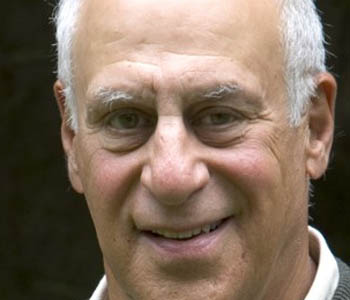Jeff Allred
American Modernism and Depression Documentary
Oxford University Press
288 pages, 9 x 6½ inches
ISBN 978 0195335682
When you hear the words “Great Depression,” certain images pop up: a mother hugging her child on a windswept plain, a hand clutching a tin plate, unemployed men standing in a breadline. We remember the Depression like this in part because of the New Deal cultural projects that turned poor people (especially rural whites) into celebrities of a sort, symbols of the crisis that bourgeois consumers of magazines, exhibitions, newspapers, films, and plays could immediately comprehend, thus seeing, however imperfectly, the outlines of a crisis whose causes were often inscrutable.
My book examines the “documentary books” that were one of the Depression’s most conspicuous cultural forms. Documentary books combined photographs and text to create an intense, vicarious encounter with social problems. Since the pioneering work of William Stott in the 1970s, many critics have shared his judgment that these books succeed because they “make the reader feel he was firsthand witness to a social condition.” As I engaged these texts, however, I began to feel that the “witness” metaphor, with its assumption of a smooth transmission of meaning from documentarian to readers, was misleading. These books were much stranger than they initially seemed.
In my readings of several examples of the genre—Erskine Caldwell and Margaret Bourke-White’s You Have Seen Their Faces (1937), James Agee and Walker Evans’s Let Us Now Praise Famous Men (1941), and Richard Wright’s 12 Million Black Voices (1941)—the documentary book is not so much an act of witness as a deconstruction of witness. These texts confront their readers not with a unitary and authoritative representation of problems with clear solutions, but with a multitude of perspectives and voices scattered widely and bewilderingly.
As such, the Great Depression’s documentary books are part of the modernist aesthetic that coalesced in the interwar period. In recounting the various traumas at work on the body politic, often in places geographically remote from cultural centers, artists confronted their audience with techniques borrowed from modernist literature and art—discontinuity between word and image, unannounced shifts in narrative perspective, and shockingly grotesque representations of otherwise familiar people, places, and things—in order to jolt readers into fresh ways of perceiving social problems and new frameworks for imagining their betterment.

Great Depression’s documentary books are part of the modernist aesthetic that coalesced in the interwar period. In recounting the various traumas at work on the body politic, often in places geographically remote from cultural centers, artists confronted their audience with techniques borrowed from modernist literature and art—discontinuity between word and image, unannounced shifts in narrative perspective, and shockingly grotesque representations of otherwise familiar people, places, and things.
A central argument of my book is that the modernist element within Depression documentary was not merely aesthetic but intimately related to the turbulent politics of the Depression era. Perhaps the greatest legacy of the New Deal era is its intense focus on, in Franklin D. Roosevelt’s famous phrase, the “forgotten man at the bottom of the economic pyramid.” This focus accompanied a robust effort to integrate those imagined as “left behind” by a technologically advanced and materially abundant modernity.
But New Deal discourse also depended upon a polarity, in which the “forgotten” are the passive, silent objects of social planning conceived and administered by a technocratic elite. The modernist strain of Depression documentary, while sharing the broad commitment to ameliorating poverty and oppression, radicalized the focus on the margins of society and thereby challenged the dominant New Deal rhetoric regarding “the people.”
The outlines of this challenge come into clear view through a comparison between two quotations from the period that both use the metaphor of vision, but in radically opposed ways. The first comes from Franklin D. Roosevelt’s second inaugural address in January 1937, in which he reflects on the unfinished business of the New Deal amid the ongoing depression:
I see a great nation, upon a great continent, blessed with a great wealth of natural resources. . . .
I see millions whose daily lives in city and on farm continue under conditions labeled indecent by a so-called polite society half a century ago. . . .
I see one-third of a nation ill-housed, ill-clad, ill-nourished.
The chain of parallelisms positions Roosevelt as the possessor of a continental gaze, and his vision is implicitly linked to a technocratic ideology in which a passive and disempowered “one-third” awaits the intervention of experts to meet its needs. Through his act of witness, the president’s audience also “sees” not only the problem, but its solution in the form of various administrative measures.
Compare Roosevelt’s magisterial vision to the very different perspective conveyed by the opening passage of Richard Wright’s 12 Million Black Voices (1941):
Each day when you see us black folk upon the dusty land of the farms or upon the hard pavement of the city streets, you usually take us for granted and think you know us, but our history is far stranger than you suspect, and we are not what we seem.
Our outward guise still carries the old familiar aspect which three hundred years of oppression in America have given us, but beneath [this] garb . . . lies an uneasily tied knot of pain and hope whose snarled strands converge from many points of time and space.
In this passage, Roosevelt’s I has given way to Wright’s you. No longer does seeing issue from a transparent eyeball, a site of unquestioned power and knowledge. Instead, it is lodged in a spectator whose vision is partial in both senses of the word. More unsettlingly, the object of vision is no longer in the third person, a “one-third of a nation” that both speaker and audience examine from a distance. Instead, Wright situates the narrator as the object of vision, as an obscure object that is only dimly visible from across a racial divide.
There is much more to say about the contrasting logics of these verbal-visual performances. But for the moment I simply want to evoke some of the ways in which modernist documentaries short-circuit habitual modes of perception and thereby raise crucial political questions. Throughout my book, I emphasize the ambiguous role of documentarians as they move between modern metropolises and hinterlands seemingly left behind by modernity. On the one hand, their cultural work can be likened to that of the engineers and laborers who built new infrastructure in the 1930s—dams, parks, and power lines. In fact, the metaphor of the intellectual as an “engineer” of culture was ubiquitous in the period on both sides of the Atlantic.
On the other hand, documentary books often emphasize the potential violence of modernization projects and especially their ignoring or silencing of the voices and desires of precisely those subjects they presume to help. Thus, for example, You Have Seen Their Faces pairs a generally progressive and reformist narrative with grotesque images of faces, bodies, and landscapes damaged by historical forces that manifestly overwhelm the sunny optimism of New Deal rhetoric. Furthermore, at several crucial points, the text ventriloquizes the most illiberal, paranoid, and racist voices in the cultural landscape by way of demonstrating the clash between local people’s perceptions of social problems and remedies and those of government officials and credentialed experts.
The result, in this text and in other examples of the genre, is a subtle psychogeography of an unevenly modernizing territory, in which things look remarkably different depending on one’s cultural location and the relation between those observing, participating, and being observed is constantly shifting. For this reason, Depression documentary is an important legacy for us today as we think through how collectivities are formed and maintained amid all manner of social antagonisms and what kind of cultural work is involved in articulating a “people” with political agency.
Earlier, I began to develop a contrast between Wright’s first person plural in 12 Million Black Voices and Roosevelt’s rhetorical performance of “seeing” the economic violence wrought on the poorest “one third of a nation.” Now, I would like to take a closer look at Wright’s “we” via a different comparison, one I develop in the final chapter: that of Time, Inc. board chairman Henry Luce in his famous essay “The American Century,” also published in 1941.
As I mentioned above, Wright’s text is structured around an antagonistic relationship between a narrating “we” that speaks for the titular “black voices” and a “you” that is initially designated as bourgeois and white. At the beginning of the text, the implied white reader is left blindly picking at the “knot” of blackness whose “snarled strands converge from many points in time and space.” By the end, Wright shifts to a different metaphor, of blackness as a “dark mirror,” to emphasize the extent to which white readers are themselves implicated in African American history and vice versa:
Look at us and know us and you will know yourselves, for we are you, looking back at you from the dark mirror of our lives!
What one sees in this dark mirror is not a neatly framed self, but an uncanny mixture of self and other, a nascent “we” whose coalescence is promised but not yet achieved.
The complexity of Wright’s revision of “we, the people” comes into clearer view in contrast to that of Luce, whose “The American Century” was originally entitled “We Americans” and was published in the pages of Life around the time of Wright’s book’s appearance. Luce’s logic is a nearly perfect inversion of Wright’s, assuming the internal coherence and transhistorical persistence of the very “we” whose internal divisions and historical development Wright takes such pains to trace out.
Moreover, Luce’s “we” is explicitly imperial in ways that anticipate the neoconservative ideology of the last several decades. He urges readers to view America, not as a “sanctuary” of democratic ideals but as “the powerhouse from which [these] ideals spread throughout the world and do their mysterious work of lifting the life of mankind from the level of the beasts to what the Psalmist called a little lower than the angels.”
In the final chapter, I examine some ways in which Luce’s flagship publications—Time, Fortune, and especially Life—model this coercive vision of collective identity. I pay special attention to the way Time Inc. publications, no less than the avant-garde work of the period, experimented with new media and new ways of combining images and text. But they did so to nearly opposite political ends, constructing a world in which “we Americans” is a product rather than a process, an answer rather than a question, and outside of history rather than continually produced within it.

Time Inc. publications, no less than the avant-garde work of the period, experimented with new media and new ways of combining images and text. But they did so to nearly opposite political ends, constructing a world in which “we Americans” is a product rather than a process, an answer rather than a question, and outside of history rather than continually produced within it.
Like many critics working at the crossroads of media history, modernism, and photography, I found myself peering over the shoulder of early twentieth century cultural critic Walter Benjamin at many points. In closing, I would like to share one particular moment that helped me to keep in view the central aims of my work.
In his brilliant essay “A Brief History of Photography” (1931) Benjamin analyzes the photographic portraits of his German contemporary August Sander, whose collations of German physical and occupational “types” Benjamin found resonant with the cultural moment. Somewhat enigmatically, Benjamin declares in regard to one of Sander’s published collections, “Sander’s book is more than a book of pictures; it is a book of exercises.”
I began to understand the rich implications of Benjamin’s statement as I worked with Depression-era documentary in the United States, observing that documentary books are not valuable as eyewitnesses to a stable social reality but as little thought experiments in a subjunctive mood: Could this be? What if this were? Might this have been? What if I were you?
For Benjamin, Sander’s photographic exercise books presented an alternative to the fascist belief in a “pure” identity that reveals itself fully and immediately to the naked eye. For me, modernist documentary books make similar demands of readers, asking them to see themselves in and through others, implicated in an often traumatic, shared history. It’s my hope that _ American Modernism and Depression Documentary_ can serve as a “book of exercises” in this sense.




We don't put paywalls. We don't distract you with ads. We don't sell your data.
Please help to keep this running!